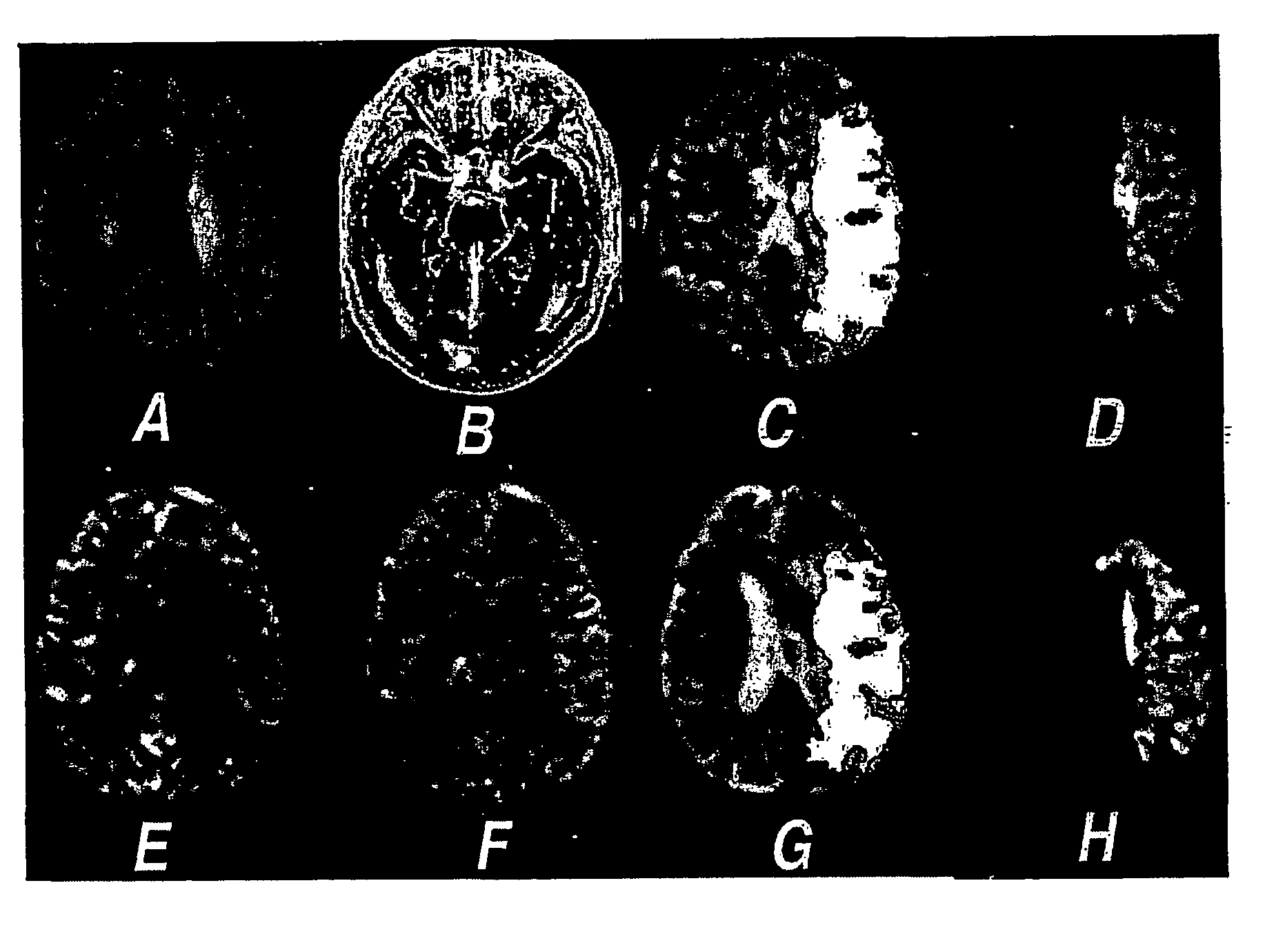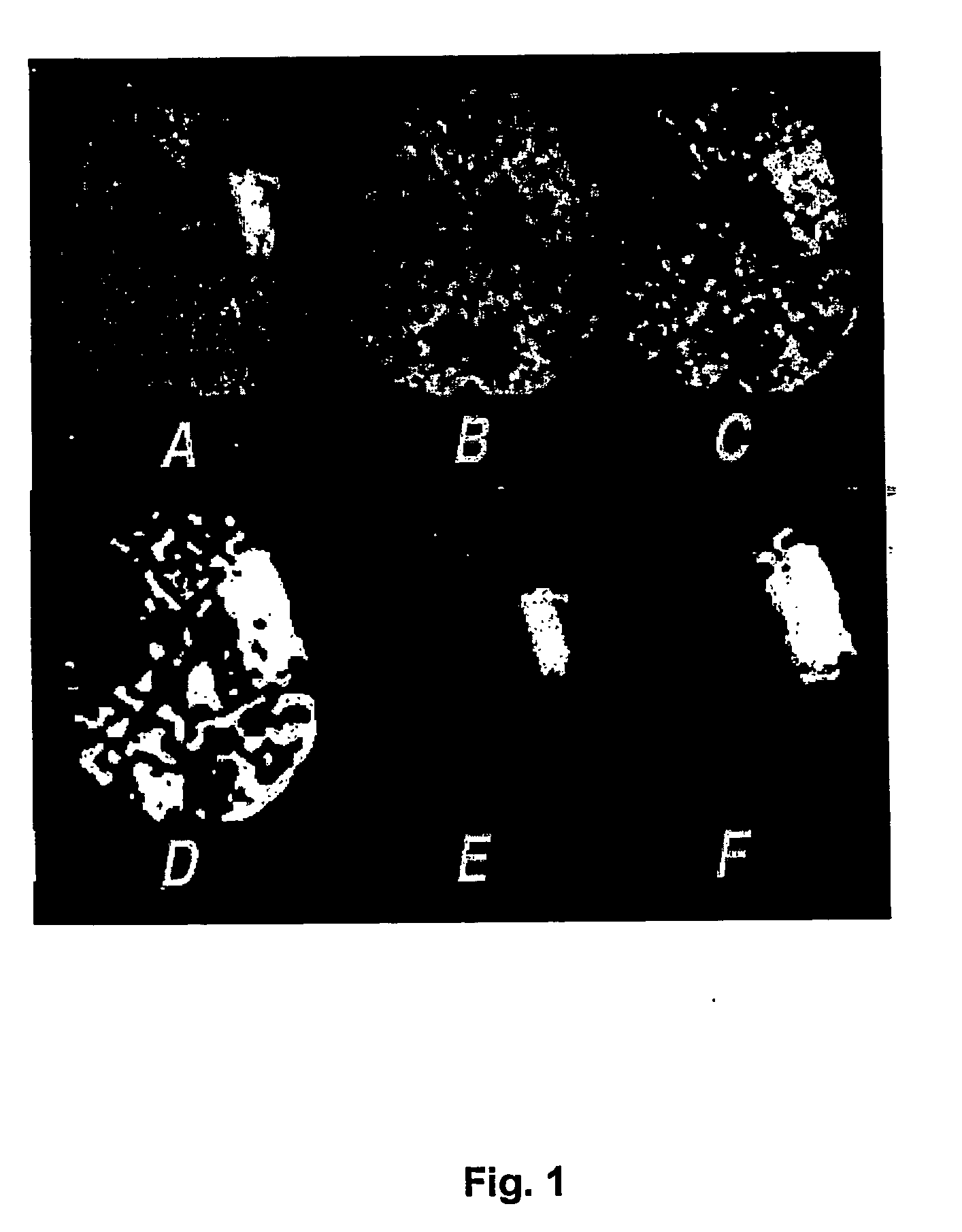Method of predicting stroke evolution utilising mri
a magnetic resonance imaging and evolution technology, applied in image enhancement, instruments, antibody medical ingredients, etc., can solve the problems of time-consuming methods, difficult to predict the final size of the stroke, and deprived cerebral nervous tissue of oxygen,
- Summary
- Abstract
- Description
- Claims
- Application Information
AI Technical Summary
Benefits of technology
Problems solved by technology
Method used
Image
Examples
Embodiment Construction
[0022] The method of predicting stroke evolution according to the preferred embodiment involves the computerised processing of brain scan images obtained shortly after the onset of stroke symptoms.
[0023] First, input magnetic resonance diffusion and perfusion images are acquired in the acute phase of stroke. Appropriate diffusion images can be acquired with standard diffusion- weighted MRI sequences.sup.1 or diffusion tensor imaging (DTI) methods..sup.2 The methodology of the preferred embodiment of this invention has been developed to process isotropically weighted diffusion images (DWI) generated from diffusion tensor images by the method of Sorensen et al..sup.3 However, the method would be applicable to process standard diffusion-weighted images where the lesion appears hyperintense.sup.4 or images of the apparent diffusion coefficient of water (ADC)..sup.5,6
[0024] Perfusion images are defined as maps of cerebral blood flow (CBF), cerebral blood volume (CBV) and mean transit tim...
PUM
| Property | Measurement | Unit |
|---|---|---|
| thickness | aaaaa | aaaaa |
| thickness | aaaaa | aaaaa |
| thickness | aaaaa | aaaaa |
Abstract
Description
Claims
Application Information
 Login to View More
Login to View More - R&D
- Intellectual Property
- Life Sciences
- Materials
- Tech Scout
- Unparalleled Data Quality
- Higher Quality Content
- 60% Fewer Hallucinations
Browse by: Latest US Patents, China's latest patents, Technical Efficacy Thesaurus, Application Domain, Technology Topic, Popular Technical Reports.
© 2025 PatSnap. All rights reserved.Legal|Privacy policy|Modern Slavery Act Transparency Statement|Sitemap|About US| Contact US: help@patsnap.com



